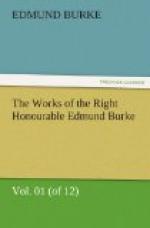SECTION III.
PROPORTION NOT THE CAUSE OF BEAUTY IN ANIMALS.
That proportion has but a small share in the formation of beauty is full as evident among animals. Here the greatest variety of shapes and dispositions of parts are well fitted to excite this idea. The swan, confessedly a beautiful bird, has a neck longer than the rest of his body, and but a very short tail: is this a beautiful proportion? We must allow that it is. But then what shall we say to the peacock, who has comparatively but a short neck, with a tail longer than the neck and the rest of the body taken together? How many birds are there that vary infinitely from each of these standards, and from every other which you can fix; with proportions different, and often directly opposite to each other! and yet many of these birds are extremely beautiful; when upon considering them we find nothing in any one part that might determine us, a priori, to say what the others ought to be, nor indeed to guess anything about them, but what experience might show to be full of disappointment and mistake. And with regard to the colors either of birds or flowers, for there is something similar in the coloring of both, whether they are considered in their extension or gradation, there is nothing of proportion to be observed. Some are of but one single color; others have all the colors of the rainbow; some are of the primary colors, others are of the mixed; in short, an attentive observer may soon conclude that there is as little of proportion in the coloring as in the shapes of these objects. Turn next to beasts; examine the head of a beautiful horse; find what proportion that bears to his body, and to his limbs, and what relation these have to each other; and when you have settled these proportions as a standard of beauty, then take a dog or cat, or any other animal, and examine how far the same proportions between their heads and their necks, between those and the body, and so on, are found to hold; I think we may safely say, that they differ in every species, yet that there are individuals, found in a great many species so differing, that have a very striking beauty. Now, if it be allowed that very different, and even contrary forms and dispositions are consistent with beauty, it amounts I believe to a concession, that no certain measures, operating from a natural principle, are necessary to produce it; at least so far as the brute species is concerned.
SECTION IV.
PROPORTION NOT THE CAUSE OF BEAUTY IN THE HUMAN SPECIES.




